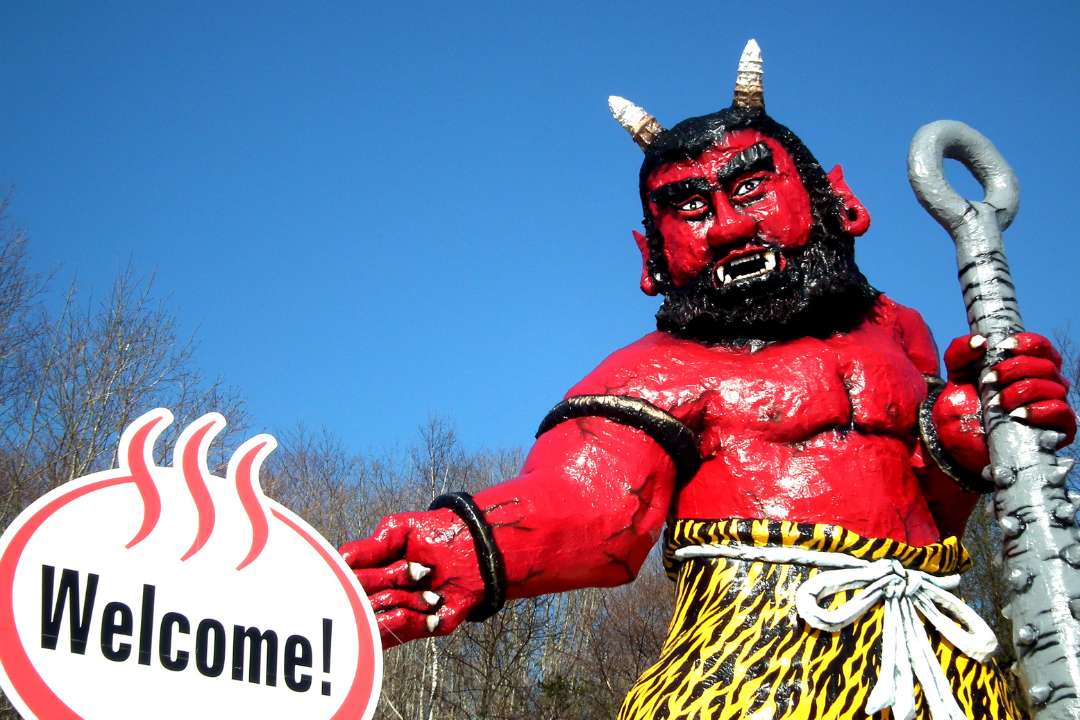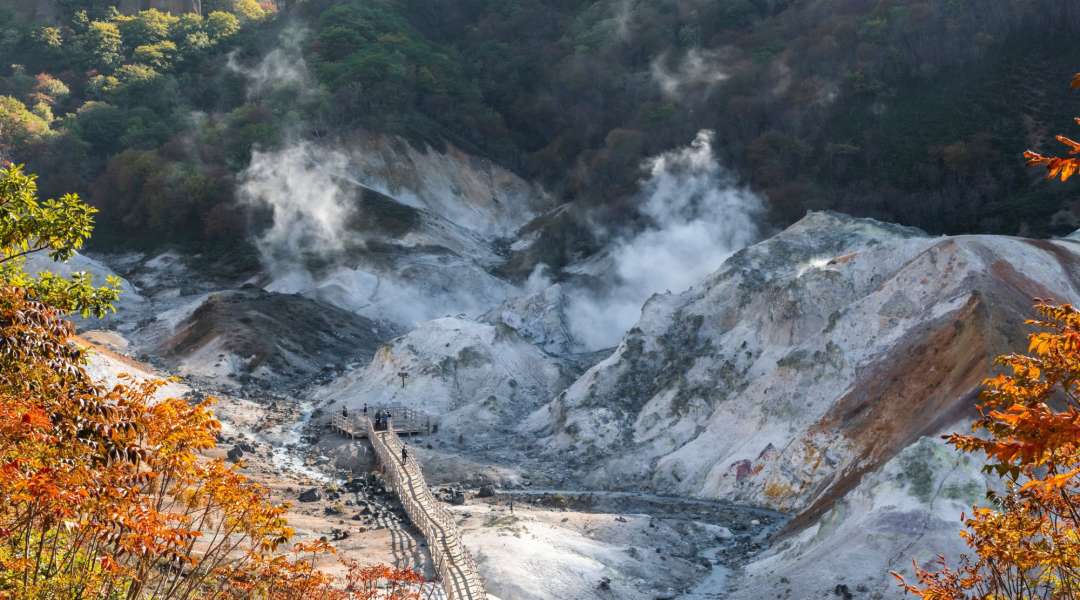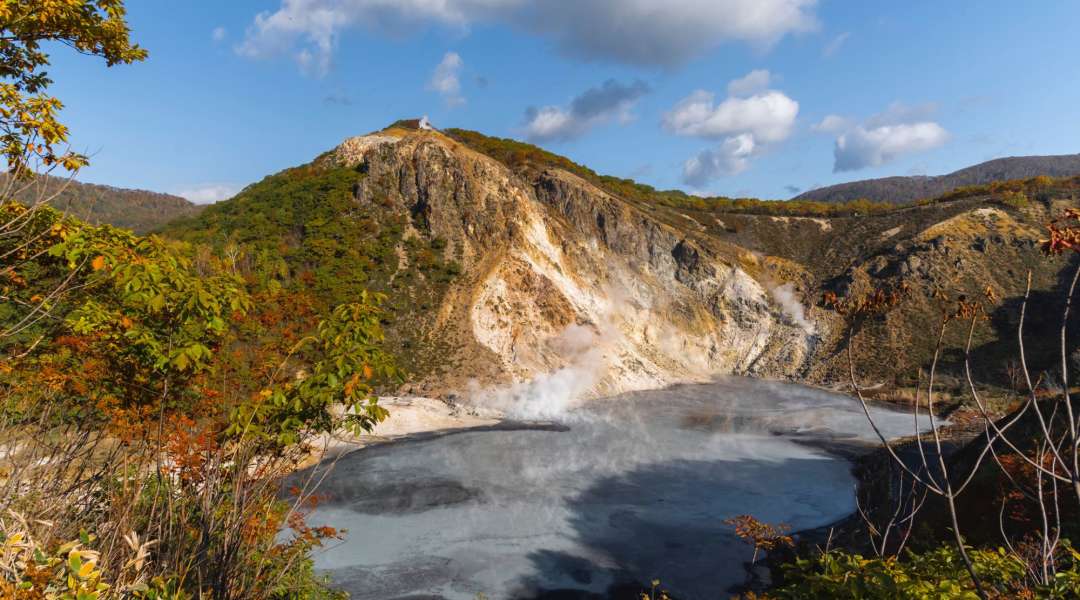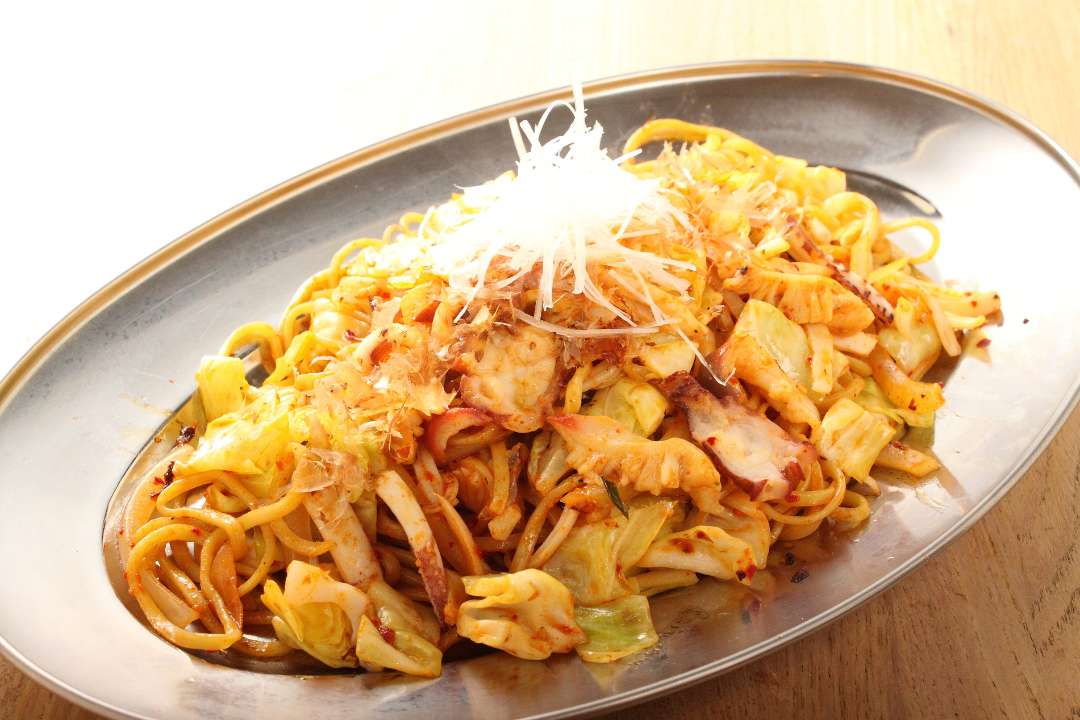
Head to Noboribetsu in Hokkaido for the best bath of your life, a 100% natural river foot bath in a forest, and (if you’re brave enough!) some close encounters of the demonic kind...
Noboribetsu is Japan’s most famous hot spring resort, reputed to have some of the best therapeutic hot spring waters in Japan. In a country that is home to over 3,000 hot springs, that’s a considerable achievement. The reason for Noboribetsu’s successful hot springs? Jigokudani, or “Hell Valley”, a phenomenal volcanic valley situated just above the town, which is the source of its outstanding thermal waters - and rumoured to be inhabited by “oni”, Japanese ogres or demons!
To begin your grand tour, hop in a taxi for the 10-minute ride up from Noboribetsu Station to Noboribetsu onsen town. The Noboribetsu Sightseeing Information Centre is slapbang in the middle of the town, so makes a great first stop to get your bearings as well as any information you might need for your visit. Then, it’s time for a long, hot soak in the tub...
1. Take a Nice, Hot Bath

Noboribetsu’s hot springs boast an incredible eleven different kinds of water to cure all manner of ills and ailments, so it would be rude not to indulge while you’re here. The best way to take the waters is to stay overnight at one of the town’s many ryokan (traditional inns) and hotels which have their own hot spring baths. In that case, head to your hotel to check in and drop your bags before beginning your exploration of the town.
If you can’t stay overnight, don’t worry. Several of the hotels also open their baths to non-staying guests during the day for anywhere between 700 - 2000 yen (£4.00 - £14.00). For the full experience, head to Dai-ichi Takimotokan, home of arguably Japan’s best modern indoors hot spring baths, where you can experience a whopping seven of the different kinds of water flowing in Noboribetsu (2000 yen / £14.00).
2. Go Demon-Spotting

Once you’re all pink and wrinkly from your bath, dry off and walk off your prawn fingers and toes as you go demon-spotting in Noboribetsu hot spring town. Why demons, you may ask? Well, Hell Valley, the volcanic valley just above the town (which we will be visiting in just a moment), is so hot that the locals used to believe that only demons could possibly survive in the sweltering temperatures.
But Noboribetsu’s resident demons haven’t just survived - they’ve thrived! At the last count, there were eleven demon statues in nine locations spread throughout the town, starting with the 18-metre tall demon standing guard at the motorway turn-off for Noboribetsu, and the Welcome Demon sitting outside JR Noboribetsu station.
3. Visit Jigokudani, aka “Hell Valley”

We’ll be honest though, it takes a special kind of person to enjoy the sulphurous eggy smell permeating the entire valley - pooh! Maybe that’s the real reason why it’s only inhabited by demons - with their supernatural powers, perhaps they’re the only ones who can stand the smell?
4. Try a 100% Natural Hot-Water Footbath

5. Watch Demons Play with Fireworks

Don’t try this at home! We recommend you leave it up to the professionals - who happen to be “yukijin”, masked demons who are the protective guardians of the hot springs at Noboribetsu. Witness their dazzling and daring performance with giant handheld fireworks at the Demon’s Fire Footpath in Hell Valley. It takes place every Thursday and Friday between June and August from 8:30pm and is free to watch from a safe distance at Hell Valley’s observation platform.

If you're visiting in August, you can go one better - the annual Noboribetsu Hell Festival (Noboribetsu Jigoku Matsuri) sees the door to “hell” opened and Enma or Yama, the King of Hell, emerge with his army of yukijin to temporarily take over the town for the weekend. Cue lively street parades, energetic folk dance performances, and fireworks displays.
6. Transform into a Ninja or Oiran



Date Historical Village is just 10 minutes by car from Noboribetsu Station, so makes a great first or last visit on your way into or out of Noboribetsu hot spring town (2900 yen / £18.00 for adults). So does Noboribetsu Marine Park NIXE, which is just 2 minutes walk from Noboribetsu Station. Here you can watch dolphin, penguin and even sardine shows, and feed or take a selfie with a smiling seal lion (2800 yen / £17.00 for adults).
7. Make Music with the Ainu

Join members of the Ainu and learn the history, culture and lifestyle of these indigenous people of northern Japan. Better known by the nickname, ‘Upopoy’ meaning ‘singing in a large group’ in Ainu language, is the newly opened National Ainu Museum and Park. Unveiled in July 2020, the open-air facility hugs the shores of Lake Poroto in the town of Shiraoi (meaning ‘place of many fireflies’), a 10-20 minute journey by train or 25 minutes by road northeast of Noboribetsu.
Lap up the ancient rhythms and sounds of Ainu musical culture through traditional instruments and dance performances like ‘mukkuri’ (bamboo mouth harp) and tonkori (a five-stringed zither) demonstrations. One of the folk dances, the ‘Ainu Ancient Rite Dance’, traditionally performed to send off the spirits of dead bears - was designated as a UNESCO intangible cultural property in 2009.
There is plenty to do at Upopoy, so plan to spend a few hours here. Gather around in a ‘cise’ or traditional Ainu home and listen to audio guides on how the Ainu used to live, in deep connection to nature and the spirit deities named ‘kamuy’ that exist within the land and air; watch Ainu woodcarving and embroidery unfold before your very eyes before trying your hand at it yourself at the many hands-on craft workshops; and browse for buys of traditional Ainu crafts at various Ainu-owned gift shops located within the museum’s grounds.

8. Slurp on Super Spicy Noodles
It’s never a waste of time to try the local food when you’re on holiday, especially if you’re in an area that’s more off the beaten track - often it gives you the chance to discover lesser-known local foods that aren’t available in the big cities and urban areas. Japan is no exception, nor is its northern island of Hokkaido - just check out these tasty local dishes that our photographer found when he ventured into the wilds of Japan’s demon town.
In keeping with its demon theme, Noboribetsu has a signature dish that’s tasty as hell - but might just be too hot for you to handle! Enma Yakisoba is a type of yakisoba (fried noodle) dish unique to Noboribetsu, named after Great King Enma, the demon king and ruler of hell according to Japanese mythology.

The spiced up noodle dish was invented by the town as a way to support local food products and industry. To qualify as Enma Yakisoba, the town requires that it must: (1) use flat noodles made from Hokkaido wheat flour, (2) use local ingredients for the topping, and (3) use the town’s secret spicy sauce. Enma Yakisoba isn’t only unique - it’s devilishly delicious!
To stay up to date with all the latest happenings in Japan follow us on Instagram, Facebook or Twitter.

















































